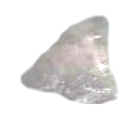|
JET
|
 |
An organic gemstone which is usually black or dark brown. It has a variable chemical composition but consists mainly of carbon and is often considered to be a variety of coal. Inclusions of pyrite may give it a metallic lustre. It is amorphous i.e. has no crystal structure, and may contain fossils.
Although very soft (2.5 on the mohs scale) it has been used for jewellery since as early as 1400 BC. Worked jet has been found in some prehistoric burial mounds. Today it is still used for beads and carvings.
Jet forms from wood which falls into stagnant water and becomes compacted and fossilized over many years due to the pressure of layers of similar material on top. Over many thousands of years it becomes a hard gemstone. Unlike other forms of coal it is usually found in rocks of marine origin.
The first jet is thought to have been found in Turkey. It was named after the French word Jaiet which was derived from the Greek words lithos gagtes which means stone of Gagas (a town in Turkey). However, the worlds most famous jet location is Whitby, North Yorkshire, England. The local economy was dependent on jet extraction thorough the 1800s.
It can also be found in France, Spain, China, Germany and Utah (US).
A silicate which is a form of spodumene containing aluminium and lithium. It is lilac or pink and derives its colour from manganese impurities which do not form part of it's chemical makeup. The greater the concentration of manganese particles the more intense the colour, although the formation of lumps in a kunzite specimen will reduce its value. The most valuable kunzite is transparent.
When it was first discovered it was thought to be a brand new gemstone, however chemical analysis proved that it had the same chemical composition as spodumene. The only difference between the two is that kunzite contains manganese impurities. It was named in 1903 after George F Kunz, the US gemmologist who discovered it. It is relatively hard (6.5-7.5 on the mohs scale). Spodumene is an important source of lithium and is used in the manufacture of glass and ceramics
Pure lilac specimens can sometimes be mistaken for amethyst, morganite or pink tourmaline. The colour can be lightened and made more sparkly by heating but the gemstone will return to its original colour in time.
It can be found in pegmatites often in association with feldspar, muscovite, quartz and tourmaline. The best quality crystals were found in Brazil, which is still the worlds leading producer of kunzite today although many deposits are near to exhaustion. Fine specimens can also be found in California, US where is was first discovered. It can also be found in Afghanistan, Madagascar, Conneticut and Maine (US).
